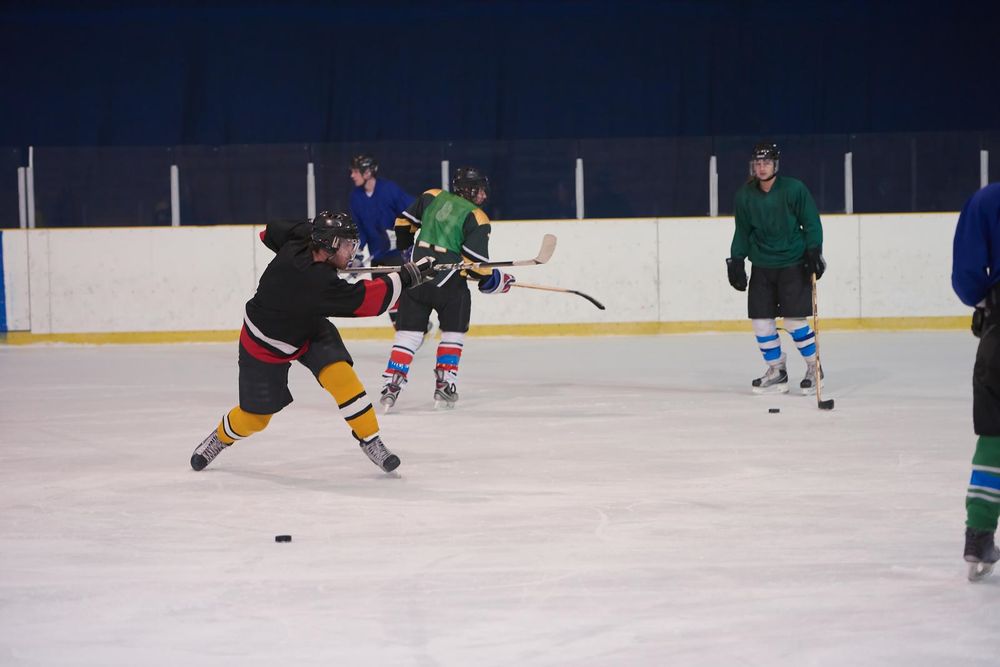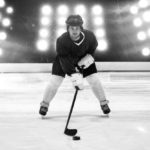In the realm of sports, prioritizing safety is of utmost importance. As individuals who partake in athletic activities, as well as parents and coaches, we strive to ensure that the sports we engage in are as secure as possible. One particular sport that often prompts questions regarding its safety is hockey. Known for its high speed and physicality, many ponder the true level of safety in this sport.
In this article, we will explore the various safety precautions and measures that can be implemented to minimize the risk of injuries in hockey. From the utilization of protective equipment to mastering proper skating techniques, we will delve into the key factors that contribute to creating a safer playing environment.
Additionally, we will examine the potential hazards associated with pucks and sticks, as well as the significance of adhering to safe practices during body checking and fighting situations. By comprehending the risks and implementing appropriate safety measures, we can relish the excitement of hockey while ensuring the well-being of all involved.
Protective Equipment
Choosing the right gear and wearing proper protective equipment is crucial in reducing the risk of injuries in hockey. One important piece of equipment that should not be overlooked is the mouthguard. Wearing a mouthguard is essential as it helps to absorb the impact of a hit, reducing the risk of dental injuries and concussions. Additionally, mouthguards can also provide some protection against lacerations to the lips and tongue.
When selecting protective gear, it is important to consider the quality and fit of the equipment to ensure maximum effectiveness. Ill-fitting gear can impair movement and hinder performance, increasing the risk of injury. Therefore, it is vital to choose gear that provides proper coverage and fits correctly to ensure optimal protection on the ice.
Learning to Skate
Learning to skate is an essential foundation for anyone looking to safely participate in the sport of hockey. Here are some tips for beginners to help them get started on the ice:
- Take lessons or practice regularly: Learning to skate requires time and effort. Taking lessons from a qualified instructor or practicing regularly will help beginners develop their skills and improve their balance and control on the ice.
- Wear a helmet: Safety should always be a priority when learning to skate. Wearing a helmet is crucial to protect against head injuries in case of falls or collisions.
- Use a hockey stick for balance: Holding a hockey stick can provide beginners with added stability and a sense of security while learning to skate. It can help them maintain their balance and prevent unnecessary falls.
Common skating mistakes to avoid include leaning too far forward or backward, not bending the knees enough, and not pushing off with the edges of the skate blades. By following these tips and avoiding common mistakes, beginners can learn to skate confidently and safely.
The Biggest Dangers: Pucks and Sticks
When it comes to the safety of hockey players, the biggest dangers lie in the fast-traveling pucks and sticks used in the sport. Pucks, weighing around 6 ounces (170g), can cause serious injuries such as bruises and broken bones when players block shots or get hit in vulnerable areas like their feet. Catching or blocking shots with the palm of the glove can also lead to injuries.
To prevent injuries from high sticks, full facial protection is highly effective. Face-shields, cages, or half visors on helmets can protect players from getting struck in the face or eyes by high sticks.
It is crucial for players to prioritize safety by wearing the appropriate protective equipment and adhering to proper techniques to minimize the risk of injury.
Body Checking and Fighting
The risks associated with body checking and fighting in hockey can pose significant dangers to players’ safety. These dangers include:
- Concussion risks: Body checking, which involves intentionally using one’s body to hit an opponent, can lead to severe head injuries, including concussions. The forceful impact of a body check can cause the brain to collide with the skull, resulting in a concussion.
- Age limits: In most recreational hockey leagues, body checking and fighting are prohibited. However, in youth hockey, body checking is permitted at a certain age. This introduces a higher risk of injuries, as younger players may not have fully developed the necessary skills and physical strength to safely engage in body checking.
- Collisions and contact: Even in leagues where body checking is not allowed, collisions and contact can still occur during gameplay. Players may accidentally collide with each other or the boards, leading to injuries such as broken bones, sprains, or contusions.
It is crucial for players, coaches, and league officials to prioritize player safety by enforcing proper rules and regulations, providing adequate training, and promoting responsible gameplay.
Proper Safety Measures
Implementing proper safety measures is essential in ensuring the well-being of hockey players. Preventing collisions and staying alert on the ice are crucial aspects of maintaining a safe playing environment.
Players must keep their heads up at all times to avoid potential collisions with opponents. It is important to be aware of incoming opponents and anticipate their movements to avoid accidents. Staying alert is not only necessary while actively playing on the ice, but also when on the bench.
Pucks can rise above the boards and pose a danger to players who are not paying attention. Adherence to safe practices, such as keeping a constant awareness of one’s surroundings, significantly reduces the chance of injury.
Frequently Asked Questions
Are Face Shields or Cages More Effective at Preventing Facial Injuries in Hockey?
When comparing face shields and cages for helmet protection in hockey, it is important to consider their effectiveness in preventing facial injuries. Additionally, the impact of visors on vision in hockey should be analyzed objectively and factually.
How Can I Prevent Foot Injuries From Hockey Pucks?
Preventing foot injuries in hockey requires proper equipment such as skate guards, reinforced skates, and ankle support. It is important to ensure a proper fit and regularly inspect equipment for wear and tear to maintain optimal protection.
What Are Some Tips for Transitioning From Ice Hockey to Inline Hockey?
When transitioning from ice hockey to inline hockey, it is important to familiarize oneself with the differences in gear. Inline hockey requires specific equipment such as inline skates, a different type of stick, and different protective gear.
What Are the Most Common Injuries Caused by Body Checking in Youth Hockey?
Head injuries and spinal injuries are the most common injuries caused by body checking in youth hockey. These injuries can occur due to the forceful impact of the check or when players fall and hit their heads or backs on the ice or boards.
How Can I Stay Safe From Flying Pucks While on the Bench?
When it comes to staying safe from flying pucks while on the bench, proper protective gear such as helmets and face shields are essential. Additionally, strategic bench positioning can significantly reduce the risk of injury.
Conclusion
In conclusion, hockey can be a safe sport when proper safety measures and precautions are taken.
Protective equipment, such as helmets, pads, and mouthguards, play a crucial role in minimizing the risk of injuries.
Learning proper skating techniques and adhering to safe practices during body checking and fighting situations also contribute to a safer playing environment.
Understanding the potential dangers associated with pucks and sticks further highlights the importance of implementing safety measures.
By prioritizing safety, athletes can enjoy the thrill of hockey while minimizing the risk of harm.









